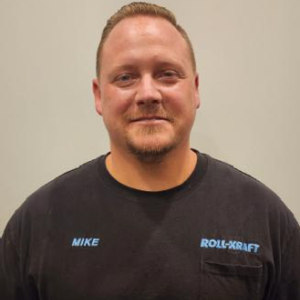Subscribe To Roll-Kraft
Receive the latest news from Roll-Kraft.

By: Robert A. Sladky
Vice President Tube Mill Engineering

It is extremely important to keep your drive shafts on "W" style tube, pipe and roll form mill lines "in time" or properly "phased". Failure to do so will result in:
There is a lot of misconception on this topic, as many feel it does not matter how the knuckles or "U" joints are lined up with each other on a typical drive shaft. However the fact of the matter is and the laws of physics state otherwise. Anyone that has worked on a two piece drive shaft on a pickup, or a van, knows what happens when the "U" joints are not lined up properly. The result is a tremendous vibration, which is caused by the improper "timing, or phasing" of the drive shaft's universal joints. To follow is a general description of how a universal joint works on a typical drive shaft.
The simple universal joint is basically two "Y" shaped yokes, connected by a cross member, called a spider, or "U" joint. The spider is shaped like an "X" with arms that extend from it which are called trunnions.

The spider allows the two yoke shafts to operate at an angle to each other. When the torque is transmitted at an angle through the universal joint, the driving yoke rotates at a constant speed while the driven yoke speeds up and slows down twice per revolution.
This changing of velocity (acceleration and deceleration) of the driven yoke increases as the angle between the two yoke shafts increases.
At four (4) degrees drive shaft angle for example, the change of velocity is .3%. At ten (10) degrees, it is 3%. If a drive shaft was set at 30 degrees and the driving yoke were turning at 1000 RPM, the velocity of the driven yoke would change from 856 RPM to 1155 RPM in one quarter of a revolution. In the remaining quarter revolution, the velocity would change from 1155 RPM to 856 RPM.
(See picture below, where the "U" joints are NOT lined up with each other.)

On a one piece drive shaft this problem is eliminated by arranging (timing/phasing) the two universal joints so that the two driving yokes are rotated 90 degrees to each other. This allows the alternate acceleration and deceleration of one joint to be offset (canceled) by the alternate deceleration and acceleration of the second joint resulting in equal RPM from the output of the transmissions to the driven stands/tooling on the tube, pipe or roll form mill.
(See picture below of proper alignment/timing/phasing of "U" joints. Outside yoke lined up with outside yoke, inside yoke lined up with inside yoke)

However, the angle between the drive and driven yokes must be very nearly the same on both joints for proper operation. When the two joints do not run at approximately the same angle, the operation of the drive shafts can be rough and vibration of the drive lines can be produced.
The re-timing/phasing of a standard drive shaft is usually quite easy to accomplish. Most drive shafts have a slip yoke between the two universal joints, which are comprised of multiple splines, hex, or square slip fits. Simply disengage this slip fit yoke, realign the universal joints, and re-engage the slip fit yoke back together. Your drive shaft is now properly timed/phased for trouble free operation.

Insure that the universal joints are properly maintained. Many firms forget to grease the "U" joints during their regular lubrication PM. Over time this can result in catastrophic failure, damaged equipment, down time, and the risk of injury to operating personnel.
Find more tube and pipe articles here.
Simply contact us here or call and get answers 24/7.
Contact Us (888) 953-9400
Roll-Kraft is pleased to announce the appointment of Mr. Mike Samplak to the position of Plant Manager at its headquarters facility in Mentor, OH.

Roll-Kraft is pleased to announce the appointment of Frank Lowery to Vice President of Roll Form Applications.

Roll-Kraft is pleased to announce the appointment of Kevin Gehrisch to the position of President.